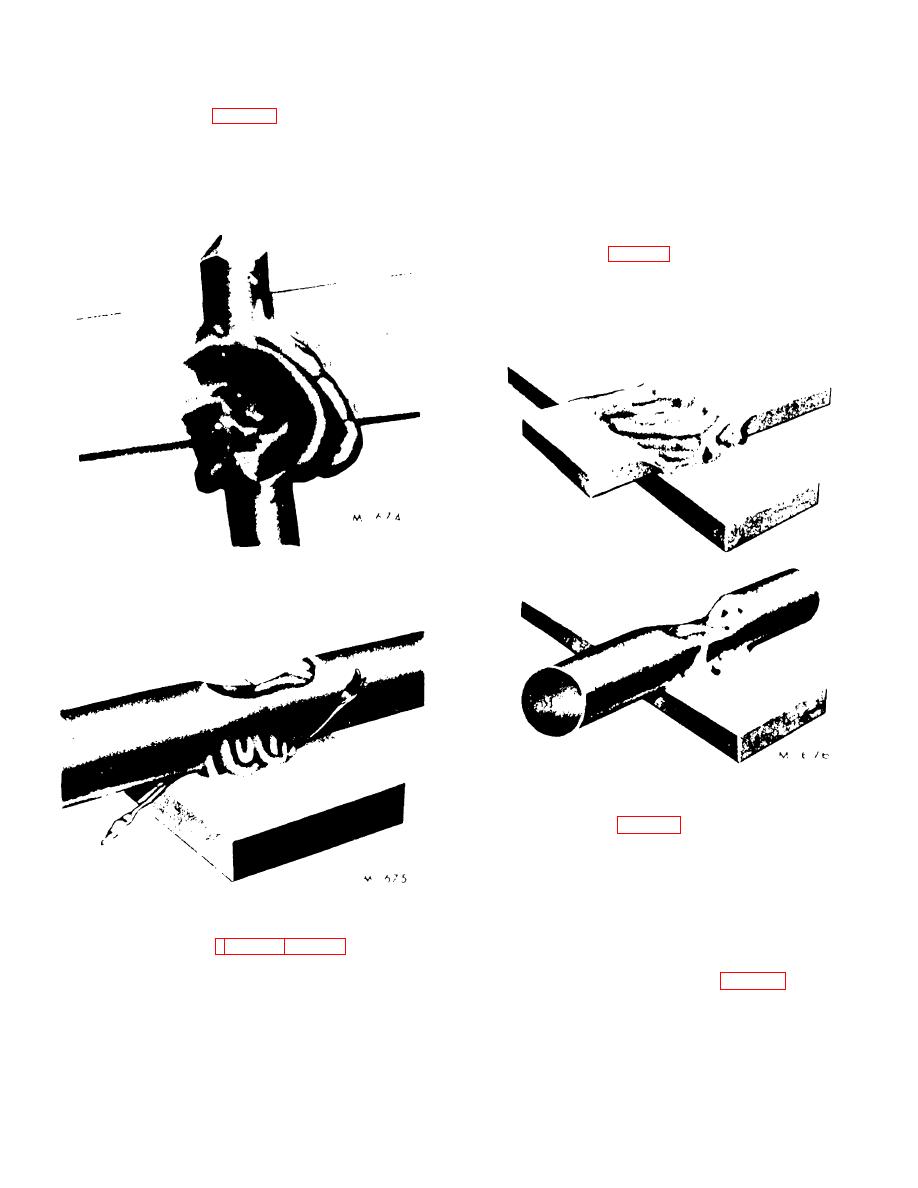 |
|||
|
|
|||
|
|
|||
| ||||||||||
|
|
 TM 750-245-4
the result of too much pressure.
The excessive
8-18. Deformed Weld (Fig. 8-5)
pressure forces the material to form a bulge while it is in
A deformed weld is one in which the diameter or
the plastic stage. A slight amount of bulging is not
thickness of either of the materials has been reduced by
considered to be detrimental. Splattering and fragments
more than 50 percent or the total reduction of both
of metal extending from the weld zone are actual cases
materials is greater than 35 percent. Deformation is
of metal expulsion and occur because of excessive
caused by excessive pressure and / or heat.
pressure and / or heat.
8-20. Blow Hole (Fig. 8-7)
A weld in which holes are evident, usually along the
fillet.
These holes are readily detectable under
magnification. Blow holes result from the formation of a
gas pocket in the weld zone which reaches such high
internal pressures that metal is expelled.
Figure 8-5. Deformed welds.
Figure 8-7. Blow hole.
8-21. Pitted Weld (Fig. 8-8)
A weld that exhibits "pits" in either or both of the
materials being joined. In certain cases, when surface
fusion occurs, the molten metal adheres to the electrode
(termed "sticking"). As the electrode force is released,
Figure 8-6. Splatter weld.
the material which as adhered to the electrode is pulled
from the parent metal, resulting in a rough and pitted
8-19. Metal Expulsion (Figs. 8-5 and 8-6)
surface.
A weld which exhibits either excessive bulging of metal
at the interface, "splashed" metal deposits on the
8-22. Excessive Surface Fusion (Fig. 8-9)
adjoining element, or fragments extending from the weld
A weld in which the weld material has melted to an
interface. Metal bulging (sometimes referred to as
excessive degree at the point of interface with the
distortion) is not metal expulsion in the true sense of the
electrode. A contact resistance exists at this point. If
word. It appears along the interface of the weld and is
this resistance is higher than that at the weldment
8-6
|
|
Privacy Statement - Press Release - Copyright Information. - Contact Us |